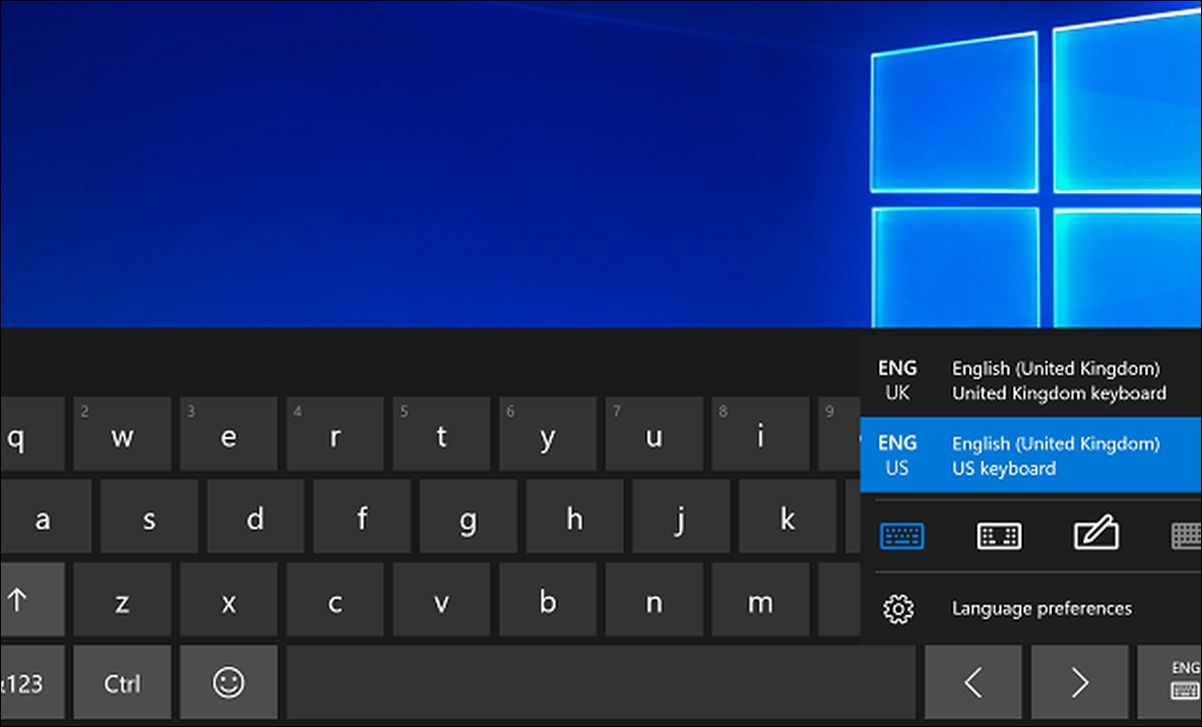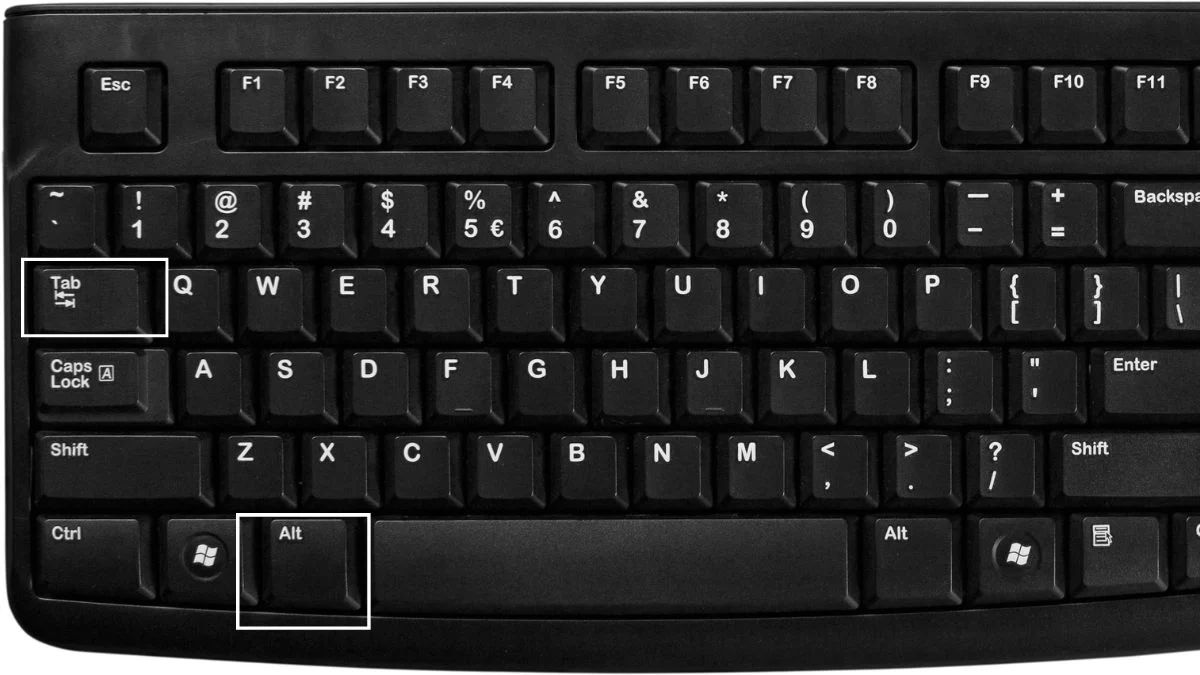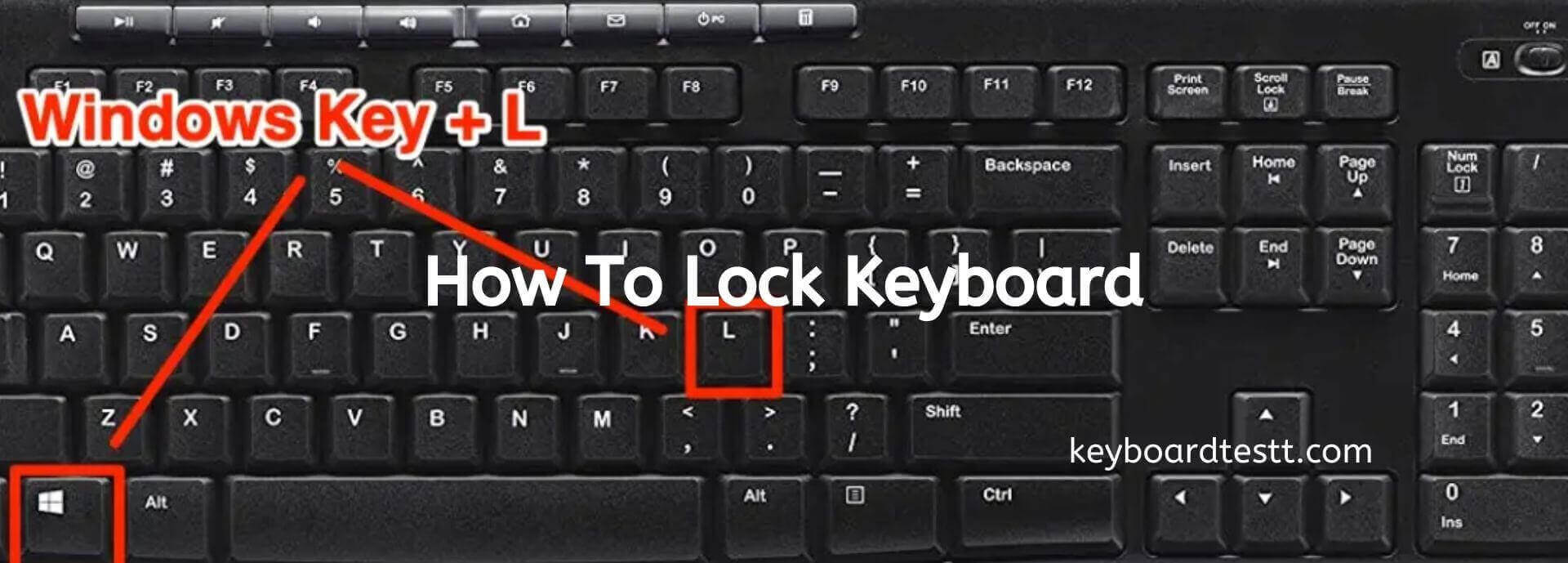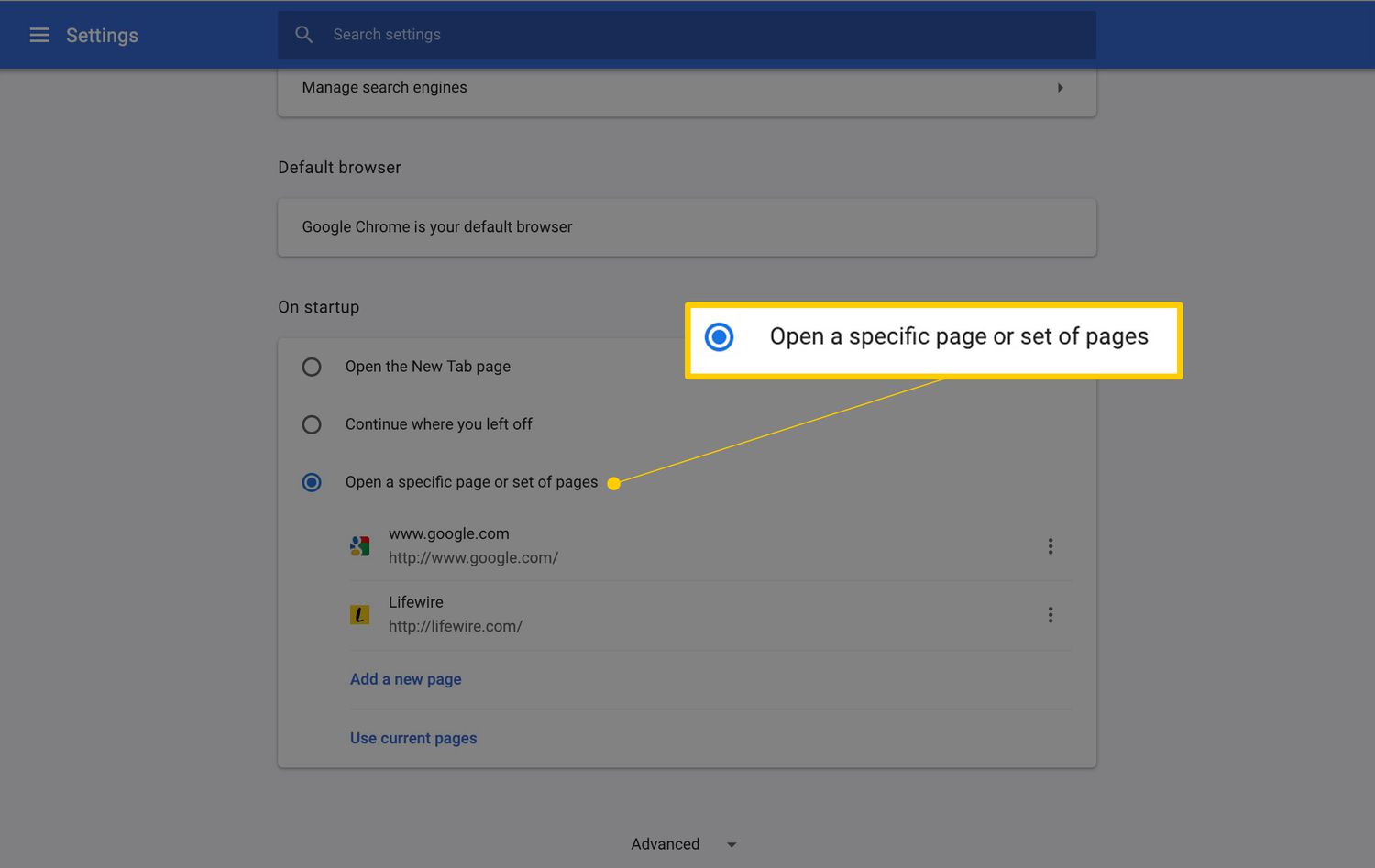Introduction
Keyboard shortcuts have become an essential part of our daily digital interactions. Whether you are a student, a professional, or a casual computer user, knowing how to utilize keyboard shortcuts can greatly enhance your productivity and efficiency. These handy combinations of keys allow you to perform tasks, navigate applications, and access features with just a few keystrokes.
In this article, we will explore the world of keyboard shortcuts, their importance, and how to effectively use them on both Windows and Mac systems. We will also discuss how to customize keyboard shortcuts to further tailor them to your needs.
Mastering keyboard shortcuts can save you valuable time and effort by eliminating the need to navigate through multiple menus and options. So, whether you’re looking to streamline your workflow, accelerate your typing speed, or simply make your computing experience more convenient, keyboard shortcuts are the way to go.
By the end of this article, you will have a solid understanding of how to use keyboard shortcuts, how to customize them, and how they can significantly enhance your productivity.
What Are Keyboard Shortcuts?
Keyboard shortcuts are combinations of keys that perform specific functions or commands on a computer or software application. They provide a quicker and more efficient way to perform tasks by eliminating the need for extensive mouse navigation and menu exploration.
These shortcuts are designed to make your computing experience more convenient and accessible. By simply pressing a sequence of keys, you can execute various actions such as copying and pasting, opening and closing applications, toggling between windows, and much more.
Keyboard shortcuts are typically categorized into two types: system-wide shortcuts and application-specific shortcuts. System-wide shortcuts perform actions that are applicable throughout the operating system, regardless of the active program. On the other hand, application-specific shortcuts are designed for specific programs and may have different functions depending on the software you are using.
Most keyboard shortcuts consist of one or more modifier keys, such as Ctrl, Alt, or Command, combined with a regular key or a function key. For example, Ctrl + C is commonly used to copy selected text or files, while Ctrl + V is used to paste the copied content.
The specific keys used for shortcuts may vary depending on the operating system and keyboard layout. For instance, on Windows systems, the Ctrl key is often used, while on Mac systems, the Command (⌘) key is frequently utilized.
It is important to note that keyboard shortcuts can significantly differ between operating systems and software applications. Therefore, it is crucial to familiarize yourself with the specific shortcuts relevant to your computer’s operating system and programs you frequently use.
Now that we have covered what keyboard shortcuts are, let’s dive into the importance of incorporating them into your computing routine and how they can benefit you.
Importance of Keyboard Shortcuts
Keyboard shortcuts offer numerous benefits that can greatly improve your productivity and efficiency while using a computer. Here are some key reasons why incorporating keyboard shortcuts into your workflow is so important:
- Time-saving: One of the biggest advantages of keyboard shortcuts is that they allow you to perform tasks much faster than using a mouse or navigating through menus. With just a few keystrokes, you can execute complex commands or actions, ultimately saving you valuable time and reducing repetitive actions.
- Efficiency: Keyboard shortcuts streamline your workflow by eliminating the need to switch between mouse and keyboard. They provide a seamless and uninterrupted experience, allowing you to stay focused and complete tasks with minimal distractions.
- Improved ergonomics: Relying solely on a mouse for navigation can lead to repetitive strain injuries, such as carpal tunnel syndrome. Keyboard shortcuts reduce the strain on your wrists and hands by minimizing the repetitive movements associated with mouse usage.
- Accessibility: For individuals with mobility impairments or those who prefer not to use a mouse, keyboard shortcuts offer an accessible alternative for navigating through applications and performing tasks efficiently.
- Discover hidden features: Keyboard shortcuts often unlock hidden functionalities and features within software applications that may not be easily accessible through menus. By familiarizing yourself with these shortcuts, you can discover and utilize advanced features that can enhance your overall computing experience.
By embracing keyboard shortcuts, you can significantly enhance your overall productivity, work more efficiently, and reduce the risk of repetitive strain injuries. The time investment in learning and mastering these shortcuts will pay off in the long run, as you’ll be able to accomplish tasks with ease and precision.
In the next section, we will explore some commonly used keyboard shortcuts that you can start incorporating into your daily computing activities.
Commonly Used Keyboard Shortcuts
Keyboard shortcuts are a powerful tool that can greatly enhance your computing experience. Here are some commonly used keyboard shortcuts that you should be familiar with:
-
Cut, Copy, and Paste:
- Windows: Ctrl + X (Cut), Ctrl + C (Copy), Ctrl + V (Paste)
- Mac: Command (⌘) + X (Cut), Command (⌘) + C (Copy), Command (⌘) + V (Paste)
-
Undo and Redo:
- Windows: Ctrl + Z (Undo), Ctrl + Y (Redo)
- Mac: Command (⌘) + Z (Undo), Command (⌘) + Shift + Z (Redo)
-
Select All:
- Windows: Ctrl + A
- Mac: Command (⌘) + A
-
Save and Print:
- Windows: Ctrl + S (Save), Ctrl + P (Print)
- Mac: Command (⌘) + S (Save), Command (⌘) + P (Print)
-
Close and Minimize:
- Windows: Alt + F4 (Close), Windows key + Down arrow (Minimize)
- Mac: Command (⌘) + W (Close), Command (⌘) + M (Minimize)
-
Switch between Applications:
- Windows: Alt + Tab
- Mac: Command (⌘) + Tab
-
Open Task Manager:
- Windows: Ctrl + Shift + Esc
- Mac: Command (⌘) + Option + Esc
These are just a few examples of commonly used keyboard shortcuts, but there are many more available depending on the operating system and software applications you use. Take some time to explore the shortcuts relevant to your daily tasks and incorporate them into your workflow.
In the next sections, we will guide you through using keyboard shortcuts on both Windows and Mac systems and show you how to customize them to further tailor your computing experience.
How to Use Keyboard Shortcuts on Windows
Windows operating system offers a wide range of keyboard shortcuts to help you navigate and perform tasks efficiently. Here is a step-by-step guide on how to use keyboard shortcuts on Windows:
-
Modifier Keys: Most keyboard shortcuts on Windows involve one or more modifier keys. The commonly used modifier keys are:
- Ctrl (Control)
- Alt (Alternate)
- Windows key
- Shift
Press and hold the appropriate modifier key(s) before pressing the associated regular key to execute the desired shortcut.
-
System-Wide Shortcuts: Windows offers several system-wide shortcuts that work regardless of the active program or application. Here are a few examples:
- Ctrl + C: Copy selected text or files
- Ctrl + V: Paste copied content
- Windows key + D: Show the desktop
- Alt + Tab: Switch between open applications
Experiment with these shortcuts to become familiar with the most commonly used system-wide commands.
-
Application Shortcuts: Software applications often have their own set of specific shortcuts. These shortcuts can vary depending on the application you are using. For example:
- Ctrl + S: Save a document in Word or Excel
- Ctrl + P: Print a document in most applications
Consult the documentation or help section of each application to explore their respective keyboard shortcuts.
-
Custom Keyboard Shortcuts: Windows also allows you to create your own custom keyboard shortcuts for specific functions or applications. To do this:
- Right-click on the application or file you want to create a shortcut for
- Select “Properties” from the dropdown menu
- Navigate to the “Shortcut” tab and locate the “Shortcut key” field
- Press the keys you want to assign as the shortcut
- Click “Apply” and then “OK”
Your custom shortcut will now be activated when you press the specified key combination.
By using these keyboard shortcuts on Windows, you can navigate through applications, perform tasks, and access various features more efficiently. Spend some time exploring the available shortcuts and incorporate them into your everyday computing routine.
How to Use Keyboard Shortcuts on Mac
Mac users can also take advantage of a variety of keyboard shortcuts to streamline their workflow and perform tasks more efficiently. Here’s a step-by-step guide on how to use keyboard shortcuts on a Mac:
-
Modifier Keys: Similar to Windows, Mac keyboard shortcuts often involve the use of modifier keys. The commonly used modifier keys on Mac include:
- Command (⌘)
- Option
- Control (Ctrl)
- Shift
Press and hold the appropriate modifier key(s) before pressing the associated regular key to execute the desired shortcut.
-
System-Wide Shortcuts: Mac offers a range of system-wide shortcuts that work regardless of the active program or application. Here are a few examples:
- Command (⌘) + C: Copy selected text or files
- Command (⌘) + V: Paste copied content
- Command (⌘) + Space: Open Spotlight search
- Command (⌘) + Tab: Switch between open applications
Take some time to familiarize yourself with these frequently used system-wide commands.
-
Application Shortcuts: Like Windows, Mac applications also have their own specific shortcuts. These shortcuts can differ depending on the application you are using. For example:
- Command (⌘) + S: Save a document in most applications
- Command (⌘) + P: Print a document
Refer to the documentation or help section of each application to discover their respective keyboard shortcuts.
-
Custom Keyboard Shortcuts: Mac allows you to create custom keyboard shortcuts for individual applications or perform system-wide actions. To create a customized shortcut:
- Go to System Preferences in the Apple menu
- Select “Keyboard” and go to the “Shortcuts” tab
- Choose the category in the left sidebar for which you want to create a shortcut
- Click on the “+” button, then enter the menu title and assign your desired shortcut
Your custom shortcut will be activated when you press the assigned keys.
By using these keyboard shortcuts on a Mac, you can navigate through applications, perform tasks, and access various features more efficiently. Spend some time exploring the available shortcuts and incorporate them into your daily computing routine.
How to Customize Keyboard Shortcuts
Both Windows and Mac operating systems offer the flexibility to customize keyboard shortcuts according to your preferences. Here’s a guide on how to customize keyboard shortcuts on your system:
-
Windows:
- Go to the “Start” menu and open the “Settings” option.
- Click on “Ease of Access” and select “Keyboard” from the left sidebar.
- Scroll down to find the “Shortcut key” section and click on “Change the way shortcut keys work”.
- Here, you can enable or disable various keyboard shortcuts or modify their assigned keys.
- Click “Apply” and then “OK” to save your changes.
Customize the keyboard shortcuts to match your preferred key combinations or disable shortcuts that you don’t use.
-
Mac:
- Go to the Apple menu and select “System Preferences”.
- Click on “Keyboard” and go to the “Shortcuts” tab.
- Select the category you want to customize from the left sidebar.
- Find the action you want to modify and double-click on it.
- Press the new key combination you want to assign to the shortcut.
- Repeat the above steps for any other shortcuts you wish to customize.
Customize the keyboard shortcuts to best suit your workflow and personal preferences.
By customizing keyboard shortcuts to align with your preferred key combinations, you can further enhance your productivity and make your computing experience more tailored to your needs.
Take some time to explore the available options and experiment with different keyboard shortcuts that align with your workflow. This customization allows you to create a personalized computing experience that optimizes efficiency and comfort.
Enhancing Productivity with Keyboard Shortcuts
Keyboard shortcuts are a powerful tool that can significantly enhance your productivity and streamline your workflow. Here are some tips on how to maximize the use of keyboard shortcuts to boost your efficiency:
- Learn and practice: Familiarize yourself with commonly used keyboard shortcuts and practice using them regularly. The more you use them, the more natural and intuitive they will become, allowing you to execute tasks quickly and effortlessly.
- Customize shortcuts: Take advantage of the customization options available on your operating system to create personalized keyboard shortcuts that align with your frequently performed tasks. This way, you can save even more time and streamline your workflow.
- Use application-specific shortcuts: Many software applications have their own unique set of keyboard shortcuts that can greatly improve your efficiency within that specific program. Take some time to explore and familiarize yourself with these shortcuts to maximize your productivity.
- Create your own cheatsheet: Write down or create a digital cheatsheet with the most frequently used keyboard shortcuts for your most commonly used programs. Having a quick reference guide will help you remember the shortcuts and avoid having to interrupt your workflow to search for specific commands.
- Stay updated: Operating systems and applications regularly introduce new features and shortcuts. Stay updated with software updates and release notes to discover new shortcuts that can further enhance your productivity. Subscribe to newsletters or follow websites that provide curated lists of useful shortcuts.
- Combine shortcuts with other tools: Keyboard shortcuts can work hand in hand with other productivity tools such as text expanders, clipboard managers, or automation software. By combining these tools, you can further automate repetitive tasks and supercharge your productivity.
By incorporating keyboard shortcuts into your daily computing routine and following these tips, you can significantly improve your productivity and efficiency. Invest some time to learn, practice, and customize shortcuts that align with your needs, and you will reap the benefits of streamlined workflows and reduced time spent on mundane tasks.
Remember, keyboard shortcuts are not merely time-saving tricks; they are powerful productivity tools that can empower you to accomplish more in less time and with fewer distractions.
Conclusion
Keyboard shortcuts are an invaluable asset for any computer user looking to enhance their productivity and streamline their workflow. These shortcuts allow you to perform tasks quickly and efficiently, saving you valuable time and reducing the reliance on cumbersome mouse navigation.
In this article, we explored what keyboard shortcuts are and why they are important. We discussed some commonly used shortcuts and provided guides on how to use keyboard shortcuts on both Windows and Mac operating systems. We also delved into customizing shortcuts to fit your specific needs and offered tips on how to enhance productivity by leveraging keyboard shortcuts effectively.
By mastering keyboard shortcuts, you can significantly boost your productivity, efficiency, and overall computing experience. The time investment in learning and familiarizing yourself with these shortcuts is well worth it, as it will ultimately make your tasks easier and more streamlined. Whether you’re a student, professional, or casual computer user, integrating these shortcuts into your routine can help you become a more proficient and efficient computer user.
So, take the time to explore, practice, and customize keyboard shortcuts that best suit your needs. With regular use, you’ll find yourself accomplishing tasks faster, navigating applications with ease, and ultimately becoming a more productive computer user.

























